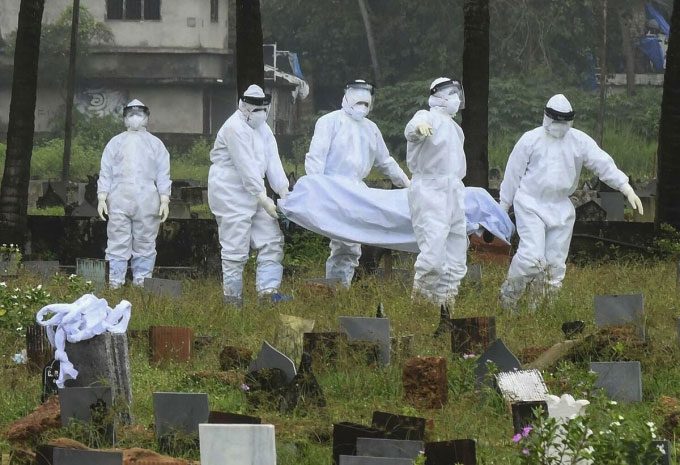The infection rate of the Nipah virus is relatively low, at about 0.33, but the mortality rate upon infection can reach 40-75%, and even up to 90%.
India has reported an outbreak of the Nipah virus in Kerala, resulting in the deaths of two out of five infected individuals. The Kozhikode district administration, where the outbreak occurred, has established a “restricted zone” and closed schools. Seventy-six people who were in contact with the source of infection are being closely monitored.
This is the fourth outbreak of the Nipah virus in Kerala. The most dangerous wave occurred in 2018, with 18 confirmed cases, 5 suspected cases, and 17 deaths among those infected.
Nipah is an RNA virus belonging to the Paramyxoviridae family. The first community outbreak was identified in Malaysia in 1998, leading to 265 illnesses and 105 deaths. Since then, there have been one or two outbreaks each year, with more than half of those infected succumbing to the disease.
The regions most affected by the virus include Bangladesh, India, Malaysia, Singapore, and the Philippines.
Deadly Virus but Not Easily Transmitted
Research on 248 Nipah virus cases in Bangladesh over several years concluded that about one-third of patients were infected from others. Scientists estimate the basic reproduction number R0 (the number of people infected from the same source) to be around 0.33. This means that the virus is unlikely to spread far from its animal source. In comparison, the R0 of Covid-19 is approximately 1.4-3.9.
According to a report from the World Health Organization (WHO), the mortality rate for Nipah virus (NiV) is 40-75%. However, during the outbreak in Kozhikode in 2018, the figure exceeded 90%. Individuals who recover from the disease often suffer long-term health issues. Meanwhile, the Covid-19 mortality rate ranges from 0.7% to 4%; influenza is about 1%…
Although the Nipah virus is deadly, there is currently no evidence to suggest it can spread beyond areas where humans or livestock come into contact with infected bats. However, outbreaks of the Nipah virus may indicate that wildlife is losing its habitat due to human encroachment. This narrows the gap between species, increasing the risk of zoonotic disease transmission.
Despite the low R0, if animals are transported to major cities with high population densities, the risk of human-to-human transmission rises. This situation could facilitate the virus’s evolution, potentially leading to a new pandemic.
Transmission Pathways of the Nipah Virus
- The Nipah virus can be transmitted to humans through direct contact with infected animals, such as bats or pigs, or their bodily fluids (blood, urine, or saliva).
- The second transmission route is through the consumption of food products contaminated by the bodily fluids of infected animals (e.g., palm sap or fruit tainted by an infected bat).
- Lastly, close contact with a person infected with Nipah or their bodily fluids (including respiratory droplets, urine, or blood) can also lead to transmission.

Healthcare workers in protective gear cremating the body of a 12-year-old boy infected with the Nipah virus in Kerala, India, September 2021. (Photo: AP)
No Vaccine or Cure Available
The rate of asymptomatic Nipah virus infections varies by outbreak, ranging from 17% to 45%. The main complication in patients is encephalitis (brain swelling). Patients also experience fever, severe headaches, and many may become disoriented, drowsy, or confused. Some patients develop chest infections.
Currently, there is no officially approved treatment for the Nipah virus. Doctors typically manage individual symptoms to help patients feel comfortable, hoping for recovery.
In animal studies, some methods have shown potential, but none have been tested on humans. In a small preclinical trial, a drug named ribavirin reduced mortality rates, but further research is needed.
Monoclonal antibody treatments have also proven effective in reducing mortality rates in green monkeys if administered early in the infection process. However, scientists have yet to confirm the drug’s efficacy in humans.
The Indian government is procuring monoclonal antibodies from Australia for use in the latest outbreak.
No vaccine exists to prevent the Nipah virus. Scientists are testing an mRNA vaccine in humans, but it has not yet yielded clear results.


















































